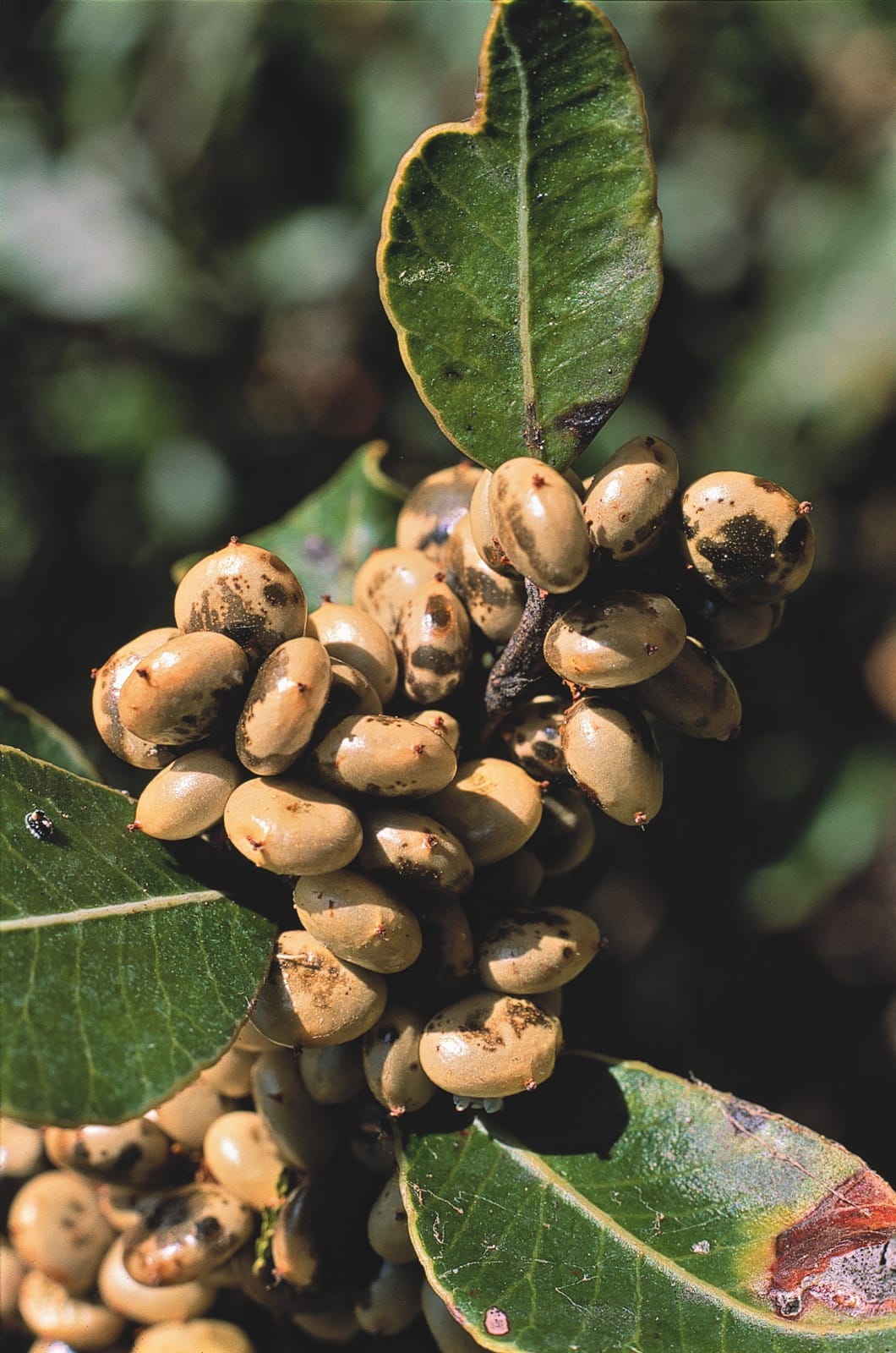Lithraea caustica
Credits
Article from New Trees by John Grimshaw & Ross Bayton
Recommended citation
'Lithraea caustica' from the website Trees and Shrubs Online (treesandshrubsonline.
Genus
Common Names
- Litre
Other taxa in genus
Shub or tree to 6 m, trunk contorted, to 0.5 m dbh. Bark green to tan, becoming dark greyish brown with age, forming heavy plates and furrows. Crown rounded; trunk branching just above the base; branches slender, erect and densely clothed with leaves. Branchlets dark red. Leaves evergreen, 1.6–5.6 × 1.8–3.3 cm, simple, coriaceous, alternate, petiole 0.3 cm long, margins entire and undulating, veins prominent and greenish white; leaf shape variable, generally oval to ovate with a rounded, acuminate or emarginate apex; upper surface green, glabrous, lower surface ferruginous, pilose or glabrous. Dioecious. Inflorescences paniculate, in the axils of upper leaves, rachis pubescent, 2–6 cm long. Flowers yellowish green, with short peduncles, unisexual. Fruit a drupe, 0.5–0.8 cm diameter, yellowish white and shiny. Flowering September to December, fruiting February to March (Chile). Rodríguez R. et al. 1983. Distribution CHILE: from Coquimbo Province to Malleco Province, particularly in the Coastal Range and the lower foothills of the Andes. Habitat Dry matorral in open areas or in the transitional forests of the coast. USDA Hardiness Zone 8. Conservation status Not evaluated. Illustration NT466, NT515.
Lithraea caustica has been cultivated at Berkeley since 1983, and at Logan since 1990, when it was grown from seed collected in Chile by Martin Gardner and Sabina Knees (G&K 4380). A seedling from this collection, donated by Martin Gardner, grows in Neil Murray’s garden in Dublin, but remains a shrub (S. Andrews, pers. comm. 2008). It is otherwise more or less unknown in horticulture. It forms a bushy small tree, with small, hard-textured, dark green leaves, well adapted to its arid habitat. The small axillary clusters of yellowish cream flowers are followed by yellowish berries. A Health and Safety risk assessment would undoubtedly condemn this tree as being too dangerous for gardens, on account of its toxic sap, so perhaps its rarity in cultivation is for once a good thing.

